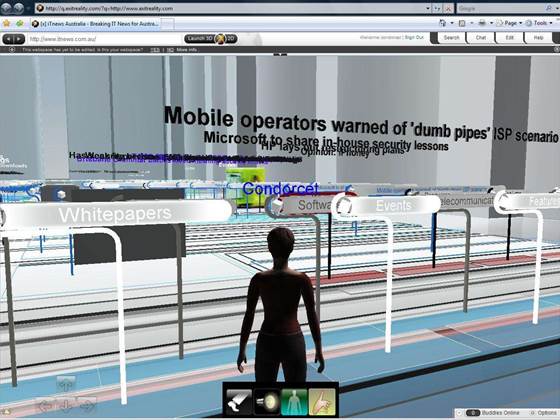
Some websites already have special designs for use with ExitReality. Major companies such as eBay and MSN are depicted as buildings which act as hyperlinks.
YouTube appears as a movie theatre, while social networking site MySpace appears as a virtual lounge.
Other websites are displayed as a grid of content that users can walk through.
“It is the entire web in 3D – making 40 billion virtual worlds – and it will instantly transform 2D content into 3D,” said ExitReality founder Danny Stefanic.
Users can search for websites using the software and instantly switch between 2D and 3D views.
Similar to many computer games, each user is represented by an avatar, or pictorial representation of themselves. As users move around the virtual world, they can interact with other users with similar interests.
“Say I am at the Ferrari website and you are there too. We both like Ferrari and so we immediately have something in common,” said Stefanic.
The idea of a 3D browser is not new. Stefanic says that he first conceived the idea 13 years ago, and has been working towards its launch ever since. The concept was popularised by science fiction author Neal Stephenson in his book Snow Crash, in which a virus infects avatars in the internet.



_(20).jpg&h=140&w=231&c=1&s=0)
_(22).jpg&h=140&w=231&c=1&s=0)




_(26).jpg&w=100&c=1&s=0)

 iTnews Executive Retreat - Security Leaders Edition
iTnews Executive Retreat - Security Leaders Edition











_(1).jpg&h=140&w=231&c=1&s=0)



